Hey. It was elegant, at least?
m1911 and .45 ammo someone show me
Ugh. Yeah. That's what I said. In all gobbledygook, but, yeah. That.
Hey. It was elegant, at least?
-

Bird - Posts: 3492
- Joined: Fri Nov 30, 2007 12:45 am
(Gigantic sigh..). I don't think so. Just mentioning what I knew. I doubt that IF the Tommy is included, it would be chambered in 10mm. It will be in a higher caliber, if not in the .45. Just stop worrying. The games not out yet, and we have enough worries and issues with it on these boards to fill a Vault.
I C WUT U DID THAR. very sneaky.
-

Ashley Campos - Posts: 3415
- Joined: Fri Sep 22, 2006 9:03 pm
Hey. It was elegant, at least?
Frankly, I could hear the sound of everyone clicking the link to reruns of House after what I posted. The offer to explain in more detail stands, but I think I've already lost the crowd.
-
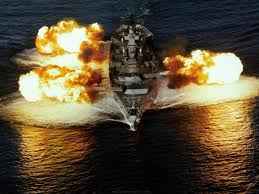
Danel - Posts: 3417
- Joined: Tue Feb 27, 2007 8:35 pm
I don't know if this has been said yet, but a 10 mm is equal to a .40. That means 10 mm is four-tenths of an inch. While a .45 is forty-five-hundredths (or four-and-a-half-tenths, if such a number existed) of an inch. The forty five has superior stopping power, as well as being a larger bullet. 10 mm are more commonly fired with higher accuracy, and at greater speeds. The Glock model 23 In real life, fires a .40 (10 mm), and is a very reliable, accurate gun. The 1911 fires forty-fives, which is a gun that can be found on any battle field since it's invention, and will knock it's target out cold.
The Glock 20 is a 10mm; the glock 23 is a .40 cal. The two guns have the same diameter bullet, but the maximum chamber pressure and case capacity for 10mm is greater. For pistol chamberings 10mm auto is to .40 S&W what 9mm parabellum is to .380 ACP.
As for the whole .45 vs 10mm. A 10mm pushes a 230 grain bullet more than 250fps faster than a .45ACP does. That's worth more than the .45's extra .05 inches of diameter.
1911's come in 10mm too. I hope any 1911's and Thompson SMGs are chambered for 10mm in game. There is no need to make the ammo types in game more complicated. We already have .22, .32, 9mm, and 10mm. There's no need to have .45 too. The Garand is going to be .308 instead of 30-06 (btw .308 Garands exist in real life). Fallout is a different timeline. Little differences like changes in which caliber is most popular for a given type of gun are ok to have.
-

Monika Fiolek - Posts: 3472
- Joined: Tue Jun 20, 2006 6:57 pm
(responding to Elvis, who has left the building)
I compared common commercial loadings that you would "most likely" find in use. I (and most anyone I know) don't shoot 185 or lower weighted bullets in .45ACP, and you can't get commercial loads in 10mm Auto higher than 200 grain that I am aware of. (Ammo and Ballistics, Fourth Edition)
The 10mm is the higher velocity round and the .45 is the larger diameter round. It depends on which school of thought you belong to (and they fight like Bethesda and Black Isle fans) as to which is "better". That's why I like Taylor Knock Out index. It is a blend of the terminal energy equations from both schools.
And as I've said before, .45ACP. Why shoot twice? I don't need the bigger mag.
PS (highest TKO I could find for factory listed ammo (sorry, no +P listed) was 12.7 for 180gr Bonded Core SP. Highest for .45ACP was 13.8 for a number of various 230gr loads)
I compared common commercial loadings that you would "most likely" find in use. I (and most anyone I know) don't shoot 185 or lower weighted bullets in .45ACP, and you can't get commercial loads in 10mm Auto higher than 200 grain that I am aware of. (Ammo and Ballistics, Fourth Edition)
The 10mm is the higher velocity round and the .45 is the larger diameter round. It depends on which school of thought you belong to (and they fight like Bethesda and Black Isle fans) as to which is "better". That's why I like Taylor Knock Out index. It is a blend of the terminal energy equations from both schools.
And as I've said before, .45ACP. Why shoot twice? I don't need the bigger mag.
PS (highest TKO I could find for factory listed ammo (sorry, no +P listed) was 12.7 for 180gr Bonded Core SP. Highest for .45ACP was 13.8 for a number of various 230gr loads)
This.
-

Charlie Ramsden - Posts: 3434
- Joined: Fri Jun 15, 2007 7:53 pm
(responding to Elvis, who has left the building)
I compared common commercial loadings that you would "most likely" find in use. I (and most anyone I know) don't shoot 185 or lower weighted bullets in .45ACP, and you can't get commercial loads in 10mm Auto higher than 200 grain that I am aware of. (Ammo and Ballistics, Fourth Edition)
The 10mm is the higher velocity round and the .45 is the larger diameter round. It depends on which school of thought you belong to (and they fight like Bethesda and Black Isle fans) as to which is "better". That's why I like Taylor Knock Out index. It is a blend of the terminal energy equations from both schools.
And as I've said before, .45ACP. Why shoot twice? I don't need the bigger mag.
PS (highest TKO I could find for factory listed ammo (sorry, no +P listed) was 12.7 for 180gr Bonded Core SP. Highest for .45ACP was 13.8 for a number of various 230gr loads)
I compared common commercial loadings that you would "most likely" find in use. I (and most anyone I know) don't shoot 185 or lower weighted bullets in .45ACP, and you can't get commercial loads in 10mm Auto higher than 200 grain that I am aware of. (Ammo and Ballistics, Fourth Edition)
The 10mm is the higher velocity round and the .45 is the larger diameter round. It depends on which school of thought you belong to (and they fight like Bethesda and Black Isle fans) as to which is "better". That's why I like Taylor Knock Out index. It is a blend of the terminal energy equations from both schools.
And as I've said before, .45ACP. Why shoot twice? I don't need the bigger mag.
PS (highest TKO I could find for factory listed ammo (sorry, no +P listed) was 12.7 for 180gr Bonded Core SP. Highest for .45ACP was 13.8 for a number of various 230gr loads)
Actualy you can get .45 ACP bullets in 165 grain down here. and thats not counting oddballs like versions of Fedreals Expanding Jacket rounds that come in at 145 grain wt for .45 APC
as for the .10 you missed Kawser 210gr JHP and West Coast RNF 220gr (granted i think the 220s performace is actualy slighly inferior balisicaly to there own 200gr, wich is bad because suposedly its for long barrel .10mm guns. but it does have a bit more muzzle energy.
-

Dale Johnson - Posts: 3352
- Joined: Fri Aug 10, 2007 5:24 am
The Glock 20 is a 10mm; the glock 23 is a .40 cal. The two guns have the same diameter bullet, but the maximum chamber pressure and case capacity for 10mm is greater. For pistol chamberings 10mm auto is to .40 S&W what 9mm parabellum is to .380 ACP.
As for the whole .45 vs 10mm. A 10mm pushes a 230 grain bullet more than 250fps faster than a .45ACP does. That's worth more than the .45's extra .05 inches of diameter.
1911's come in 10mm too. I hope any 1911's and Thompson SMGs are chambered for 10mm in game. There is no need to make the ammo types in game more complicated. We already have .22, .32, 9mm, and 10mm. There's no need to have .45 too. The Garand is going to be .308 instead of 30-06 (btw .308 Garands exist in real life). Fallout is a different timeline. Little differences like changes in which caliber is most popular for a given type of gun are ok to have.
As for the whole .45 vs 10mm. A 10mm pushes a 230 grain bullet more than 250fps faster than a .45ACP does. That's worth more than the .45's extra .05 inches of diameter.
1911's come in 10mm too. I hope any 1911's and Thompson SMGs are chambered for 10mm in game. There is no need to make the ammo types in game more complicated. We already have .22, .32, 9mm, and 10mm. There's no need to have .45 too. The Garand is going to be .308 instead of 30-06 (btw .308 Garands exist in real life). Fallout is a different timeline. Little differences like changes in which caliber is most popular for a given type of gun are ok to have.
Add 12GA, 20GA, 5.56, .357, .44, 5mm, and .45-70 to that list. There's already a crap load of ammo types.
Of course, you're assuming about the Garand style rifle. We don't know what it's chambered in yet. Maybe they changed the sniper to .30-06. We also have not seen .32 confirmed yet. With luck the hunting rifle will use .308
PS (that 10mm round you mention would have a TKOF of about 13.5)
-
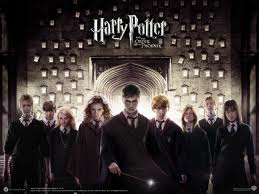
Natalie Harvey - Posts: 3433
- Joined: Fri Aug 18, 2006 12:15 pm
I'd take a big, slow round like the .45 ACP anyday, Its slow so it takes that little bit of extra time to rip & tear through your body causing a lot of damage and causing hydro-static shock. :tops:
-
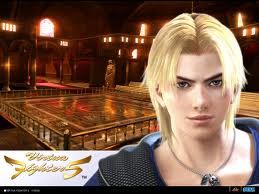
Luna Lovegood - Posts: 3325
- Joined: Thu Sep 14, 2006 6:45 pm
Actualy you can get .45 ACP bullets in 165 grain down here. and thats not counting oddballs like versions of Fedreals Expanding Jacket rounds that come in at 145 grain wt for .45 APC
as for the .10 you missed Kawser 210gr JHP and West Coast RNF 220gr (granted i think the 220s performace is actualy slighly inferior balisicaly to there own 200gr, wich is bad because suposedly its for long barrel .10mm guns. but it does have a bit more muzzle energy.
as for the .10 you missed Kawser 210gr JHP and West Coast RNF 220gr (granted i think the 220s performace is actualy slighly inferior balisicaly to there own 200gr, wich is bad because suposedly its for long barrel .10mm guns. but it does have a bit more muzzle energy.
I was lazy. I only brought one book in from the garage. It only listed factory 10mm load up to 200gr. Unless the Mv of these rounds is greater than, say, 1300fps (which I doubt with the heavier bullets) then you're still looking at Taylor KO factor numbers of aboud 13-13.5 max. This round, is not substantially greater, if at all than some .45ACP rounds, unless you load the hell out it. The trade off is the .45 is surpressable. Basically speaking though, in terms for this game, these rounds are close enough "for government work"
-

Dale Johnson - Posts: 3352
- Joined: Fri Aug 10, 2007 5:24 am
well to be fair I think the 220 was some odd attempt to get the stoping power of the .45 in a .10 mm round while keeping most of the velocity of the 10mm.
if your going 10mm though your probably better off with the 200 or 210 grain rounds
if your going 10mm though your probably better off with the 200 or 210 grain rounds
-

Lauren Graves - Posts: 3343
- Joined: Fri Aug 04, 2006 6:03 pm
Add 12GA, 20GA, 5.56, .357, .44, 5mm, and .45-70 to that list. There's already a crap load of ammo types.
Of course, you're assuming about the Garand style rifle. We don't know what it's chambered in yet. Maybe they changed the sniper to .30-06. We also have not seen .32 confirmed yet. With luck the hunting rifle will use .308
PS (that 10mm round you mention would have a TKOF of about 13.5)
Of course, you're assuming about the Garand style rifle. We don't know what it's chambered in yet. Maybe they changed the sniper to .30-06. We also have not seen .32 confirmed yet. With luck the hunting rifle will use .308
PS (that 10mm round you mention would have a TKOF of about 13.5)
If I recall correctly recall there was an interview where a developer talked about there being twice as many guns in New Vegas as in fallout 3, that the guns from 3 would be back and there'd be that many new guns.
The downside with the 220-230 grain 10mm is that they tend to be cast bullets. Still the 220 grain cast lead buffalo bore load that pushes 1200 feet a second is nothing to sneeze at (TKO of 15). Double Tap's 230 does 1125 feet a second.
-

Sarah Kim - Posts: 3407
- Joined: Tue Aug 29, 2006 2:24 pm
If I recall correctly recall there was an interview where a developer talked about there being twice as many guns in New Vegas as in fallout 3, that the guns from 3 would be back and there'd be that many new guns.
The downside with the 220-230 grain 10mm is that they tend to be cast bullets. Still the 220 grain cast lead buffalo bore load that pushes 1200 feet a second is nothing to sneeze at (TKO of 15). Double Tap's 230 does 1125 feet a second.
The downside with the 220-230 grain 10mm is that they tend to be cast bullets. Still the 220 grain cast lead buffalo bore load that pushes 1200 feet a second is nothing to sneeze at (TKO of 15). Double Tap's 230 does 1125 feet a second.
Yeah they said most guns would be back, but not which, and they didn't say in what chamberings. After reading Elvis' (Josh) knowledge of firearms, there is no way he will have a bolt action hunting rifle chambered in a .32 cal pistol round.
And on that note, this Elvis is leaving the building. It's always fun talkin' bullets with folks who know something, but I got a big fat cigar and a new gunsmithing book calling me. :bolt:
-

Samantha Wood - Posts: 3286
- Joined: Sun Oct 15, 2006 5:03 am
I don't know if this has been said yet, but a 10 mm is equal to a .40. That means 10 mm is four-tenths of an inch. While a .45 is forty-five-hundredths (or four-and-a-half-tenths, if such a number existed) of an inch. The forty five has superior stopping power, as well as being a larger bullet. 10 mm are more commonly fired with higher accuracy, and at greater speeds. The Glock model 23 In real life, fires a .40 (10 mm), and is a very reliable, accurate gun. The 1911 fires forty-fives, which is a gun that can be found on any battle field since it's invention, and will knock it's target out cold.
No it is not. The .40 S&W is in fact a much weaker version of the 10mm. In fact, 10mm supporters call it the .40 Short & Weak. I'd prefer to just keep the 10mm around. It's more canonical and we don't really need another ammo type out there. I'd rather see an out of place 10mm Tommy Gun for example than have to lug around another type of ammo. It would make things even more difficult for hardcoe mode players if every other gun fired a new ammo type.
-

Life long Observer - Posts: 3476
- Joined: Fri Sep 08, 2006 7:07 pm
No it is not. The .40 S&W is in fact a much weaker version of the 10mm. In fact, 10mm supporters call it the .40 Short & Weak. I'd prefer to just keep the 10mm around. It's more canonical and we don't really need another ammo type out there. I'd rather see an out of place 10mm Tommy Gun for example than have to lug around another type of ammo. It would make things even more difficult for hardcoe mode players if every other gun fired a new ammo type.
Nate, I think he meant in diameter, not in power.
-
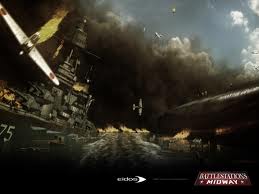
Queen of Spades - Posts: 3383
- Joined: Fri Dec 08, 2006 12:06 pm
Not to nerd out too much here, but it does need to be stated that you're comparing 180 gr 10mm Auto against 230 gr .45 ACP. Certainly you know that 10mm Auto can be loaded extremely hot and that its smaller diameter means its more practical to double-stack it and still retain a relatively slim grip design (e.g. the Glock 20).
I will now abandon this thread for PS3 playing. *flies away with Rad Child*
I will now abandon this thread for PS3 playing. *flies away with Rad Child*
I love the M1911 pistol, it has the best trigger of any gun I've ever shot. You can double stack .45 ACP. I carry a Para Ordnance P13-45 which uses 13 round double stack mags, which I load with 230gr Federal hydra-shok +P. I also have a couple of 20 round extended mags for it, which aren't very reliable, but they're fun to use on the range. Before I got the Para Ordnance, I had another M1911 with the standard 7 round single stack mags. I actually find that the fat grip of the double stacked Para Ordnance feels better than the slimmer single stacked M1911.
Anyway, I'd rather see the 10mm stay in the game for consistency with previous Fallout games. If I want an M1911 or Thompson in the game, that's what mods are for.
-

Vivien - Posts: 3530
- Joined: Fri Apr 13, 2007 2:47 pm
With luck the hunting rifle will use .308
It does.
-

NAtIVe GOddess - Posts: 3348
- Joined: Tue Aug 15, 2006 6:46 am
It does.
JOYGASM!
Sorry slight overreaction at that being literaly the first post on the page when I clicked it, did not even know it was J.E posting when I saw that
-
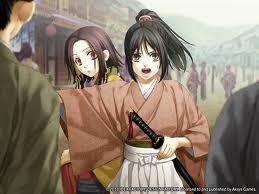
Dalley hussain - Posts: 3480
- Joined: Sun Jun 18, 2006 2:45 am
It does.
Cookie for me :cookie: Thanks Elvis.
-
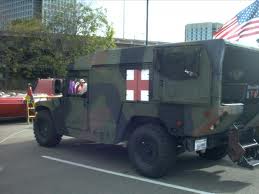
Alyesha Neufeld - Posts: 3421
- Joined: Fri Jan 19, 2007 10:45 am
I C WUT U DID THAR. very sneaky.
I'm glad you caught that.
And .46ACP, you didn't lose a couple of us. I was trying to keep up. I have very little firearm knowledge, minus the shooting experience. I know more in practice, than background. Point is, I do enjoy the in depth explanations. It's good to learn.
-
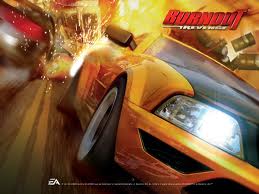
Michelle Serenity Boss - Posts: 3341
- Joined: Tue Oct 17, 2006 10:49 am
I'm glad you caught that.
And .46ACP, you didn't lose a couple of us. I was trying to keep up. I have very little firearm knowledge, minus the shooting experience. I know more in practice, than background. Point is, I do enjoy the in depth explanations. It's good to learn.
And .46ACP, you didn't lose a couple of us. I was trying to keep up. I have very little firearm knowledge, minus the shooting experience. I know more in practice, than background. Point is, I do enjoy the in depth explanations. It's good to learn.
Simplified for those of us who are not as familiar with this stuff, it all boils down to how you determine the impact force of the bullet. There's basically two sides to this one: Light and fast vs. Heavy and slow.
Joe Velocity says kinetic energy is expressed as 1/2 mass x velocity2 and uses that formula for impact force of a bullet.
Bob Diameter says the area of impact has an effect on the force transmitted to the target, and expresses that as mass x velocity x diameter.
They fight like fishwives over this stuff. I will give a few examples:
Joe Velocity says:
A 180 grain (a measure of the mass of the bullet) 10mm Auto bullet fired with a muzzle velocity (the speed the bullet leaves the gun) of 1030 feet per second will yield 425 foot pounds (a measure of force) at the muzzle. Light and fast.
A 230gr .45ACP bullet with a muzzle velocity of 900fps will leave the barrel with 415ftlb of force. Heavy and slow. Win for Joe right?
Bob Diameter counters with:
The 180gr 10mm bullet has a diameter of .400" so the impact energy (expressed in Taylor Knock Out Factor, which accounts for bullet diameter) is 10.6
The 230gr .45ACP bullet is bigger by .050" , and has a TKO of 13.4. Win for Bob right?
So you can see, it depends on what particular factor of bullet performance you consider most important. High velocity rounds travel flatter trajectories with less drift, while larger slower bullets have a large area of impact on the target and transfer more of their momentum. The key is to find a round that offers a good balance of both.
-

Isaiah Burdeau - Posts: 3431
- Joined: Mon Nov 26, 2007 9:58 am
thats also why you see ammo like Gaser, and rounds like Barns Varmit grenade, V-Max, and other composit rounds.
-

jessica breen - Posts: 3524
- Joined: Thu Aug 03, 2006 1:04 am
thats also why you see ammo like Gaser, and rounds like Barns Varmit grenade, V-Max, and other composit rounds.
Yes. Both of the formulas above are for your regular everyday round nose solid bullet. Nobody's come up with any comparative formulas that I know of for the fancier bullets. Just how much force is transferred to a human body by a .45 JHP +P round? Answer? I don't know. But usually enough.
-

Hayley O'Gara - Posts: 3465
- Joined: Wed Nov 22, 2006 2:53 am
Im not a gun nutt, I don't have the time to be one I have too many other hobbies, but I do like gun's and my favorite pistol's without a dout are the 1911's. Else I would not post a thread like this one, with that said . . .
The fact the 9mm pistols in the game look like 1911's the chances of a .45 pistol of any kind have gone down a bit, because I do not see why they would want to add any .45 other then the m1911 or something very similar. The chances of any gun's that take .45 is not exactly at a %90 but who know's. The probability of a gun that takes .45 ammo is still decently good id think just because the probability of the Tommy Gun being in is decently good as well.
But . . I would not get your hopes up for a .45 pistol, not on release of the game anyway id give it a %30 - %40 chance that they'd add one cause again no telling. I factor in Obisidian, Fallout 2, Fallout Tactic's, Tommy Gun vault boy artwork, the name of the game itself Fallout New Vegas, talks I have read over about dev's like Sawyer talking about gun's etc etc and then the fact no one has said .45 ammo will not be in the game yet.
& with that said I don't even want to know now, ive said this before and I will say it again the worse thing you can do with a game your really looking forward to playing is read forums and check updates after you've already gathered a good amount of information. It is almost like developing the game yourself and then playing it after it is finished & gone gold.
The fact the 9mm pistols in the game look like 1911's the chances of a .45 pistol of any kind have gone down a bit, because I do not see why they would want to add any .45 other then the m1911 or something very similar. The chances of any gun's that take .45 is not exactly at a %90 but who know's. The probability of a gun that takes .45 ammo is still decently good id think just because the probability of the Tommy Gun being in is decently good as well.
But . . I would not get your hopes up for a .45 pistol, not on release of the game anyway id give it a %30 - %40 chance that they'd add one cause again no telling. I factor in Obisidian, Fallout 2, Fallout Tactic's, Tommy Gun vault boy artwork, the name of the game itself Fallout New Vegas, talks I have read over about dev's like Sawyer talking about gun's etc etc and then the fact no one has said .45 ammo will not be in the game yet.
& with that said I don't even want to know now, ive said this before and I will say it again the worse thing you can do with a game your really looking forward to playing is read forums and check updates after you've already gathered a good amount of information. It is almost like developing the game yourself and then playing it after it is finished & gone gold.
-
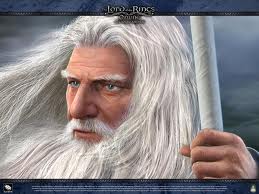
saharen beauty - Posts: 3456
- Joined: Wed Nov 22, 2006 12:54 am
Yes. Both of the formulas above are for your regular everyday round nose solid bullet. Nobody's come up with any comparative formulas that I know of for the facier bullets. Just how much force is transferred to a human body by a .45 JHP +P round? Answer? I don't know. But usually enough.
Thanks for the lessons. It's good to know. I know basics, but I like the extra knowledge. :tops:
-
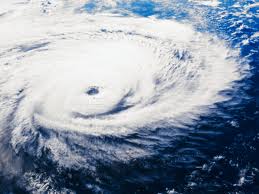
Zoe Ratcliffe - Posts: 3370
- Joined: Mon Feb 19, 2007 12:45 am
lets face it, right now for the Real Guns Go Bang Bang not pewpewzapzap we have
22 caliber round
9mm round
10mm round
.357 magnum round
.44 magnum round
12.7mm round
20 gauge shotgun shell
12 gauge shotgun shell
5.56 mm(Posible)
.308 caliber round
.50 caliber round
25mm grenade
40mm grenade
Missle
Mini nuke (ok techicaly this one is for the "Guns should go Go KABOOOOOM! bunch)
adding in the .45 probably will not even be noticed at this point.
22 caliber round
9mm round
10mm round
.357 magnum round
.44 magnum round
12.7mm round
20 gauge shotgun shell
12 gauge shotgun shell
5.56 mm(Posible)
.308 caliber round
.50 caliber round
25mm grenade
40mm grenade
Missle
Mini nuke (ok techicaly this one is for the "Guns should go Go KABOOOOOM! bunch)
adding in the .45 probably will not even be noticed at this point.
-

Iain Lamb - Posts: 3453
- Joined: Sat May 19, 2007 4:47 am
